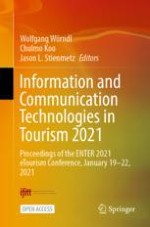
Open Access 2021 | OriginalPaper | Buchkapitel
Meme Tourism: A Conceptual Framework
verfasst von : Yerin Yhee, Jahyun Goo, Chulmo Koo
Erschienen in: Information and Communication Technologies in Tourism 2021
Aktivieren Sie unsere intelligente Suche, um passende Fachinhalte oder Patente zu finden.
Wählen Sie Textabschnitte aus um mit Künstlicher Intelligenz passenden Patente zu finden. powered by
Markieren Sie Textabschnitte, um KI-gestützt weitere passende Inhalte zu finden. powered by